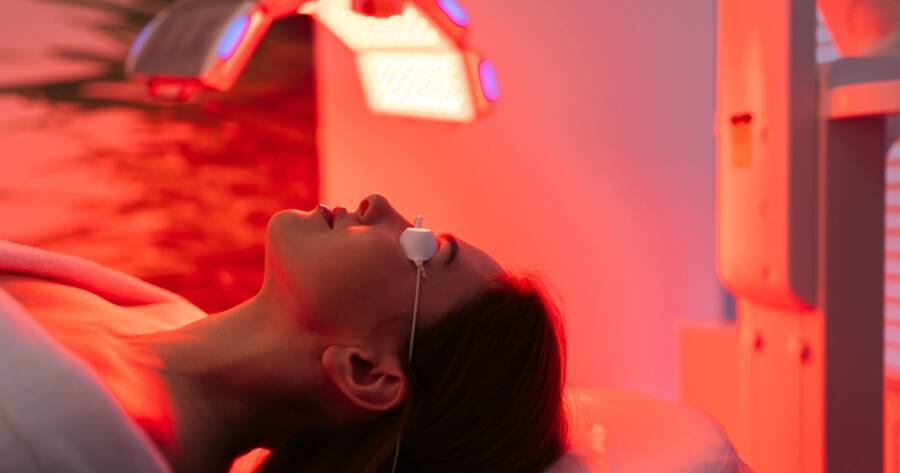In recent years, red light therapy has gained attention as a potential breakthrough in home health solutions. With claims ranging from reducing pain to promoting skin rejuvenation, more people are curious about its effectiveness and safety. This non-invasive treatment involves exposing the skin to low-wavelength red light, and it’s now available for use at home. But does it really live up to the hype?
Understanding Red Light Therapy
Red light therapy, also known as low-level laser therapy (LLLT) or photobiomodulation (PBM), involves the use of red or near-infrared light to penetrate the skin. The light is thought to stimulate the body’s cells, increasing energy production at the cellular level. This boost in cellular energy is believed to promote healing, reduce inflammation, and support overall health.
Red light therapy is typically applied through devices like LED panels, handheld units, or masks that emit red or near-infrared light at specific wavelengths. These devices are available for home use, making this once professional-only treatment now accessible to the general public. But what exactly can this therapy do, and what should you know before using it at home?
Potential Benefits of Red Light Therapy
Red light therapy has been researched for its potential benefits in various areas of health, both physical and aesthetic. Many studies suggest that this treatment could provide several positive effects.
Pain Relief and Inflammation Reduction
One of the most promising uses of red light therapy is in pain management. Studies have shown that red light therapy may help reduce inflammation and accelerate the healing process in injured tissues. This could be beneficial for people suffering from chronic conditions such as arthritis, tendonitis, or muscle soreness. Athletes and individuals recovering from injuries might find relief from pain and faster recovery with regular sessions.
Skin Health and Rejuvenation
Another area where red light therapy shows promise is in skin health. It’s believed to stimulate collagen production, which can help improve skin texture and reduce the appearance of fine lines and wrinkles. Some studies suggest that red light therapy may be effective in treating acne, scarring, and even sun damage. As a non-invasive option for skin rejuvenation, it offers a less aggressive alternative to more invasive procedures like Botox or chemical peels.
Improved Mood and Sleep
Some users report improved mood and sleep patterns after using red light therapy. Exposure to red light can promote the production of melatonin, a hormone that regulates sleep. Red light therapy’s ability to help regulate circadian rhythms may also support individuals who struggle with sleep disorders or jet lag. Additionally, the calming effects of this therapy may help reduce anxiety and stress levels, contributing to better overall mental health.
Possible Risks and Side Effects
While red light therapy is generally considered safe, it’s essential to understand the potential risks and side effects before incorporating it into your wellness routine.
Eye Safety
One of the most significant concerns when using red light therapy is protecting your eyes. The light emitted by red light devices can be intense, and prolonged exposure may cause damage to the eyes, leading to discomfort or even vision issues. Many devices come with safety goggles or eye protection, but it’s crucial to use them as instructed. Avoid staring directly into the light to minimize the risk of eye strain.
Skin Sensitivity
Some users may experience mild skin irritation or redness after using red light therapy, especially if the light is applied for too long or too frequently. This sensitivity is usually temporary and fades after a short period. If you have sensitive skin, start with shorter sessions to see how your skin reacts before gradually increasing the duration.
Unregulated Devices
Not all red light therapy devices are created equal, and the quality of at-home devices can vary significantly. Poorly made devices may not emit light at the correct wavelength or intensity, reducing the effectiveness of the treatment. Before purchasing a device, research its specifications and choose one from a reputable manufacturer to ensure safety and optimal results.
Is Red Light Therapy Right for You?
Red light therapy offers numerous benefits that make it an appealing option for many people looking to improve their health and wellness. However, it’s essential to understand that this therapy is not a one-size-fits-all solution. The results can vary depending on individual health conditions, treatment consistency, and the specific issue being addressed.
Before beginning any new treatment, especially one that involves home-use devices, it’s a good idea to consult with a healthcare professional. They can guide you on whether red light therapy is suitable for your particular needs, help you understand how to use the devices safely, and avoid potential complications.
The Future of Red Light Therapy in Everyday Wellness
As red light therapy continues to grow in popularity, it may play a significant role in the future of home health. The potential benefits for pain relief, skin health, and even mood improvement make it an attractive option for many individuals seeking non-invasive solutions.
While there are some risks to consider, these can usually be managed with proper precautions. As research in this field continues to evolve, red light therapy could become an essential part of many people’s home health routines, offering a convenient and effective way to enhance overall well-being.

